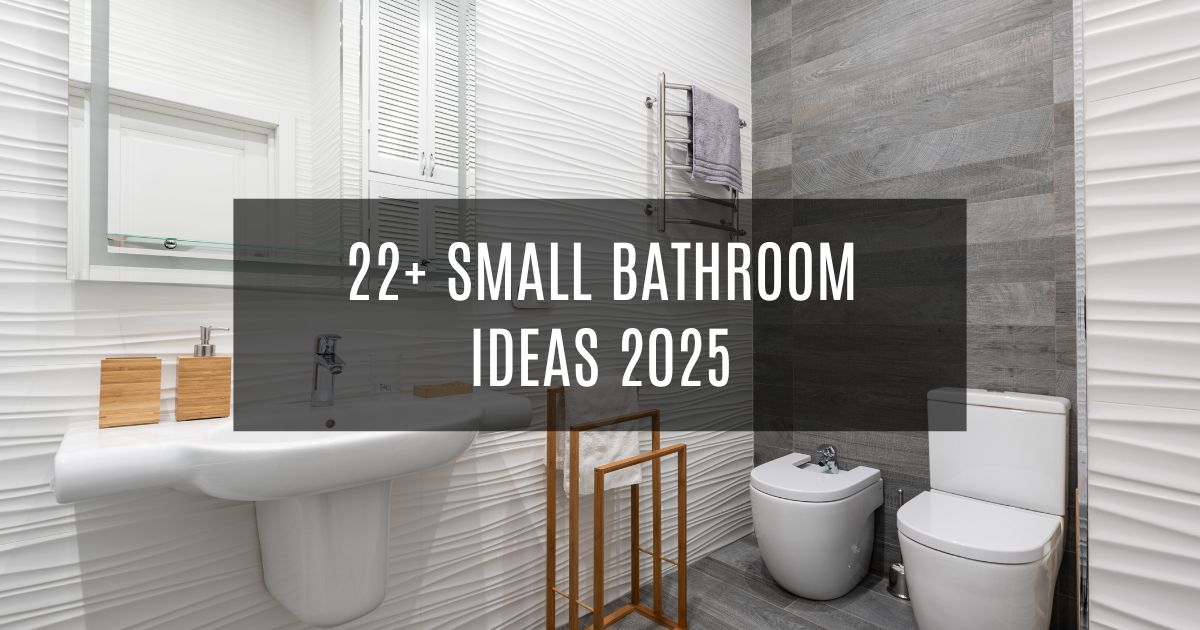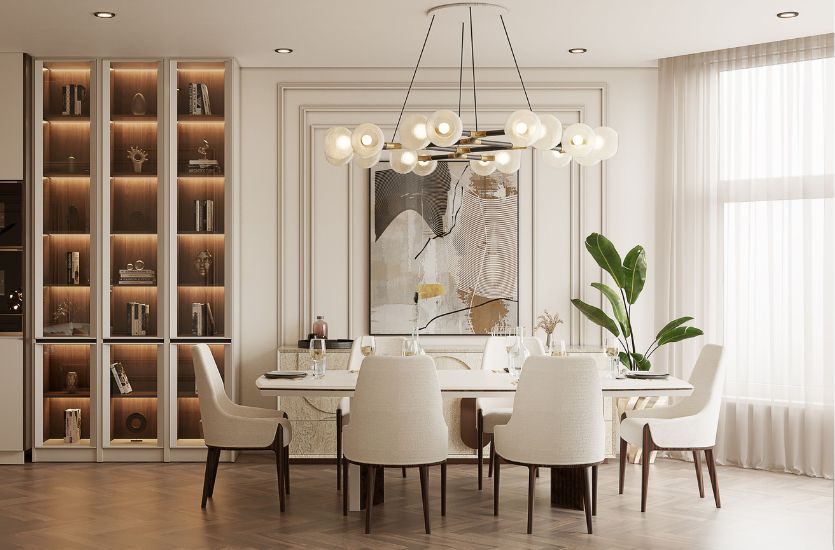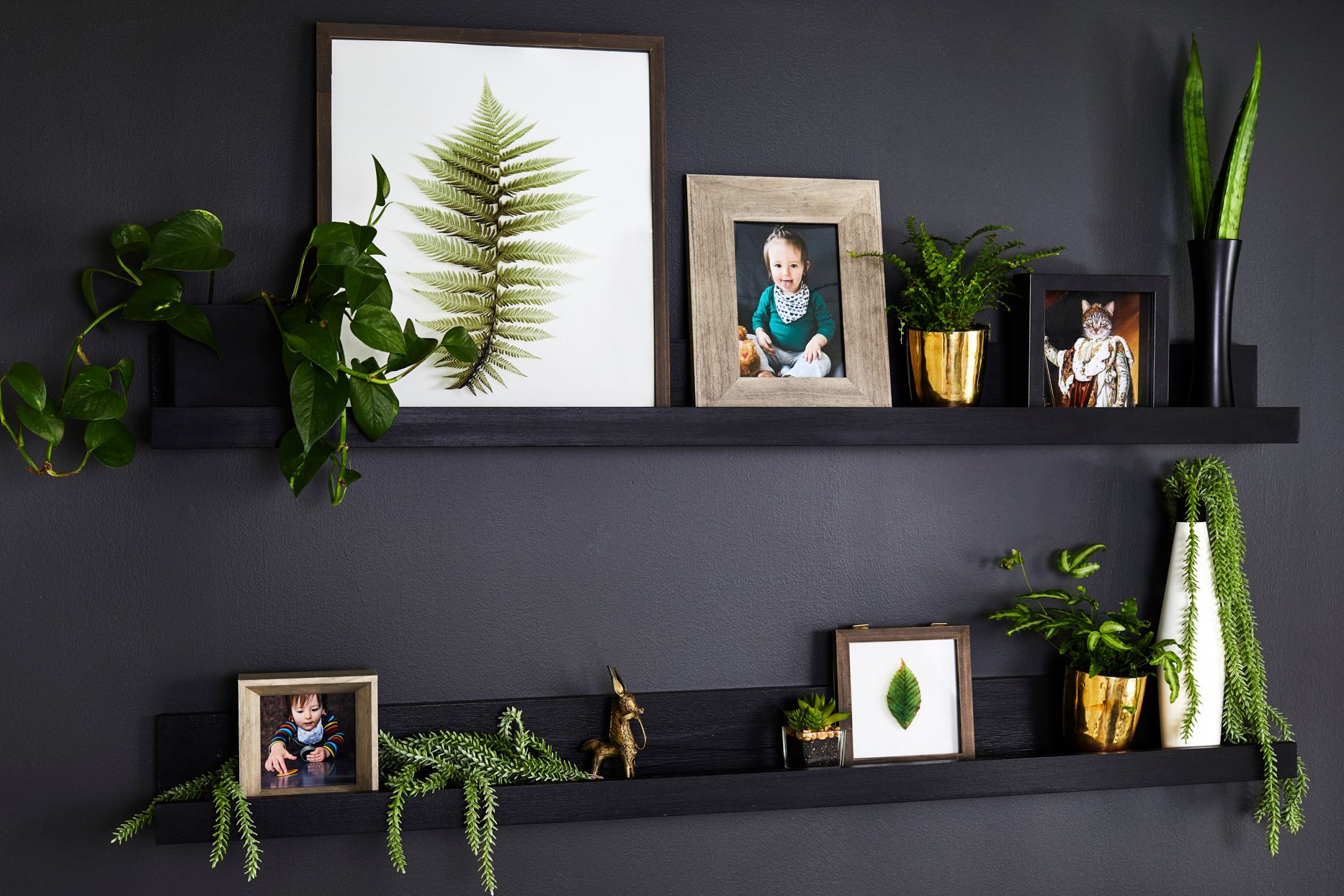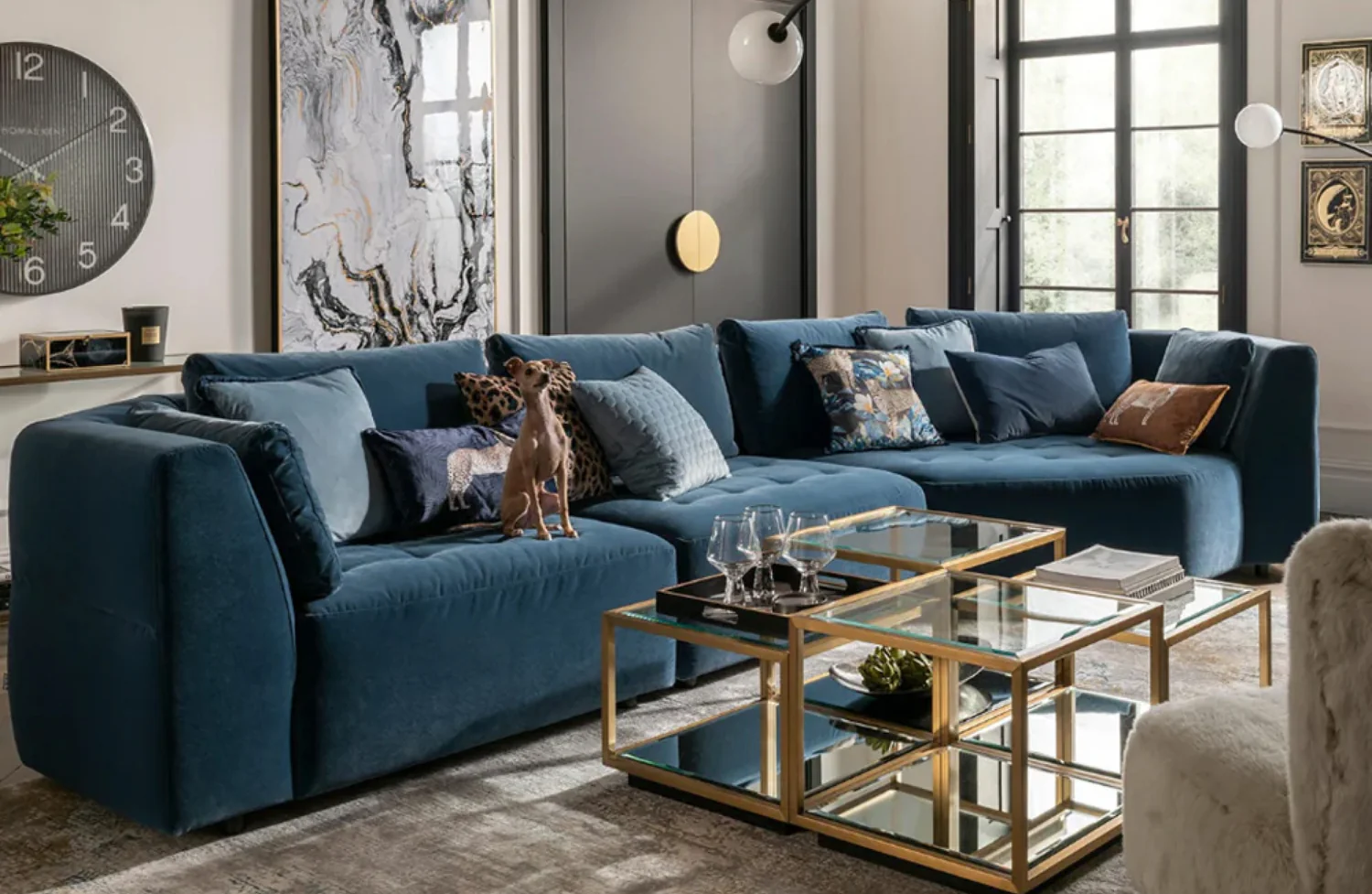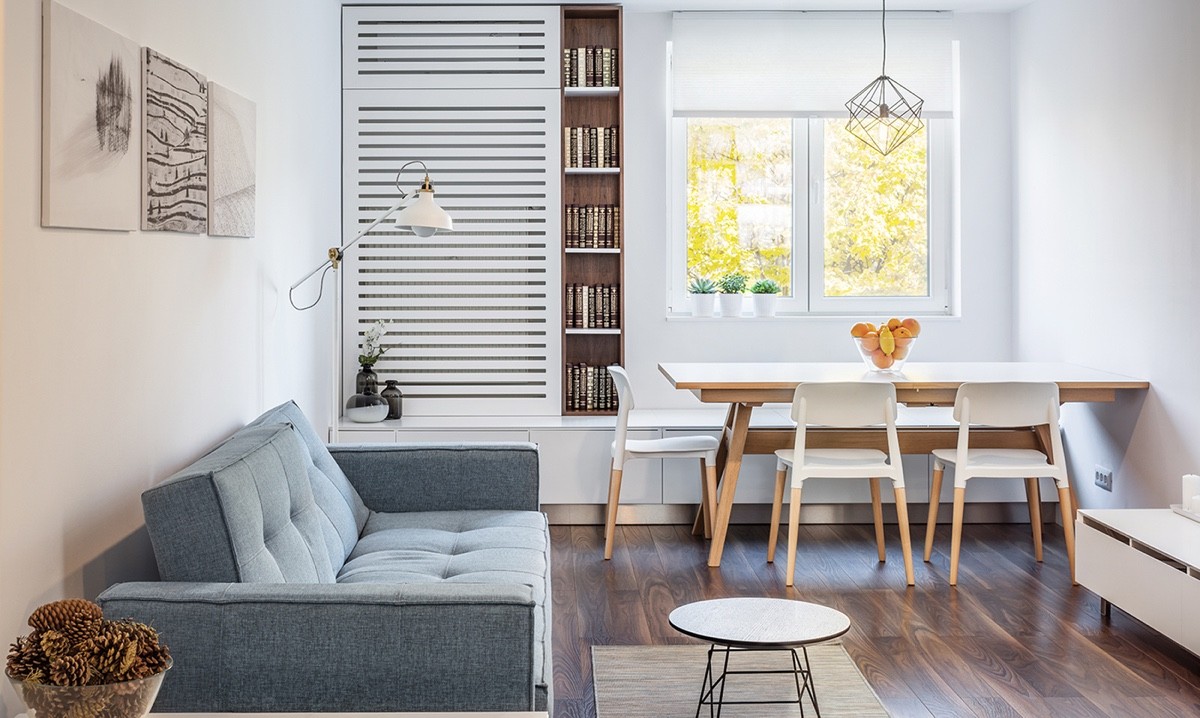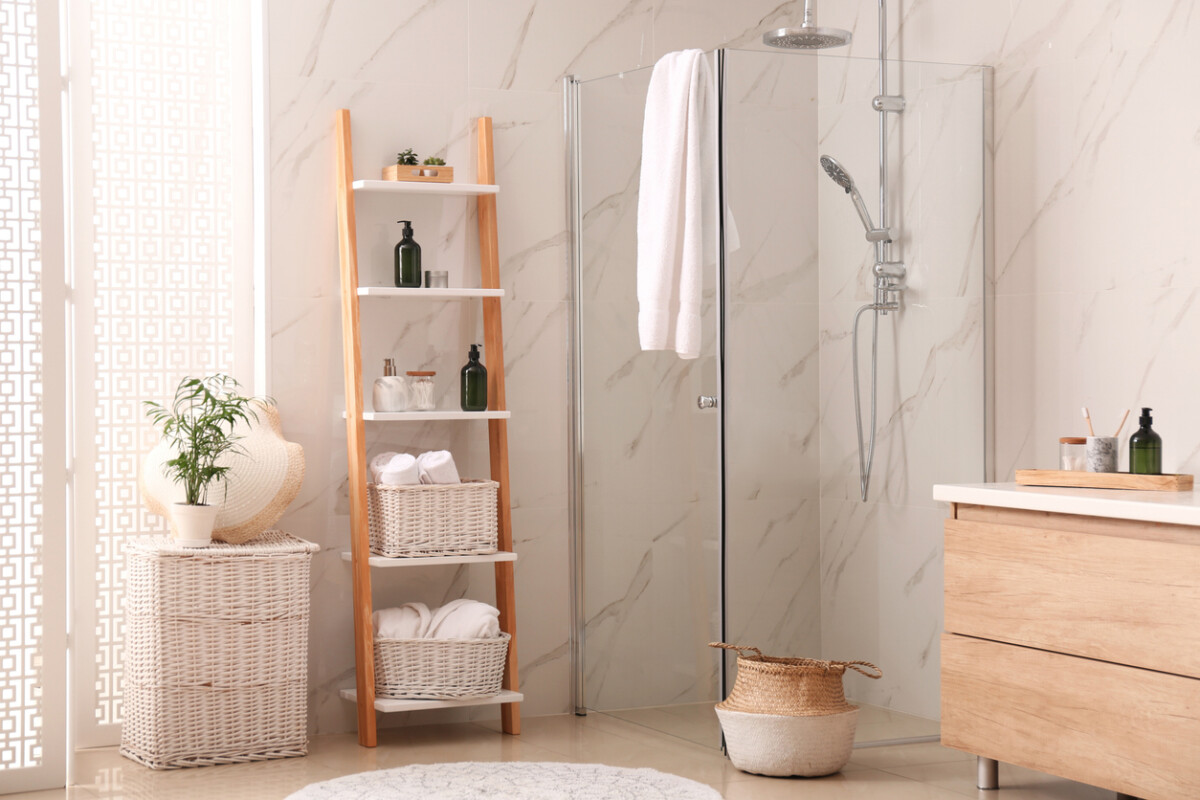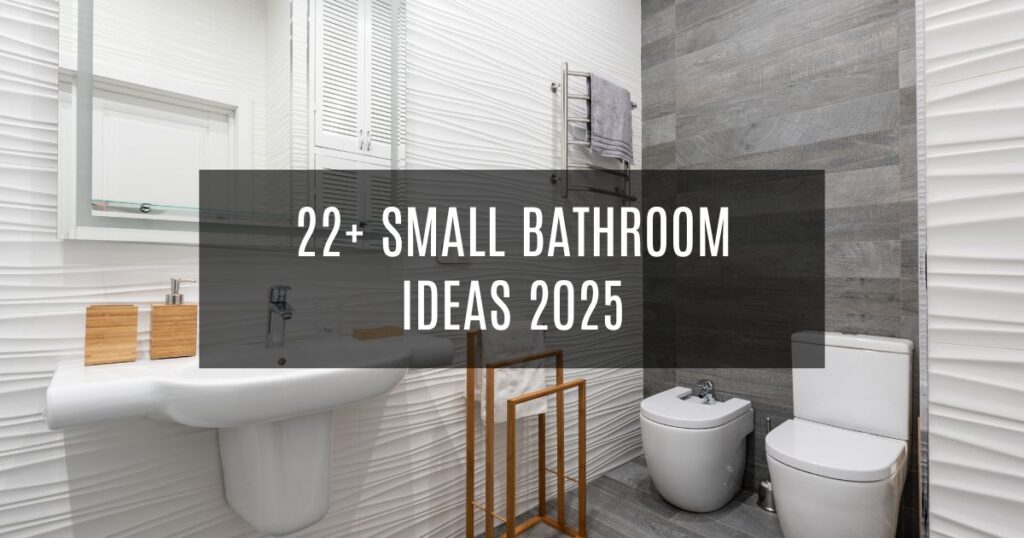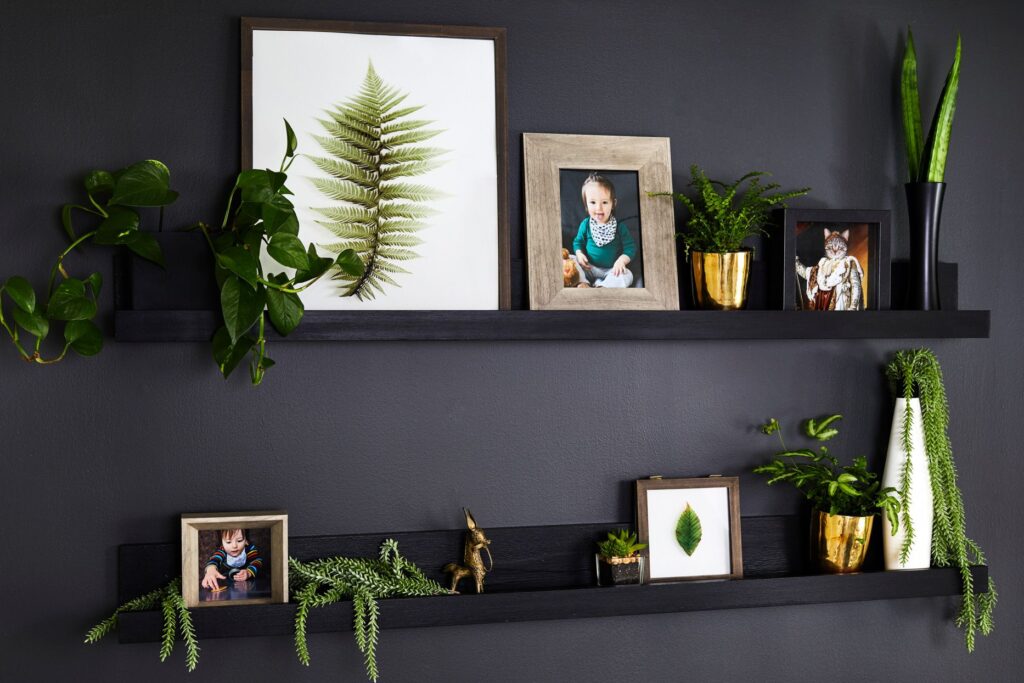Are you tired of juggling between your living room and a dedicated office space? Do you often find yourself wishing for a stylish yet practical area where you can be just as productive as comfortable? You’re not alone.
With remote work becoming more common, more and more people—like you—are looking for ways to transform their primary living areas into dual-purpose environments.
The great news is that you don’t need a huge home or a separate room to achieve this. By being strategic with your layout, furniture choices, and decorative elements, you can seamlessly blend your living room and office into one inviting space.
Think about it: you deserve a setup that boosts your productivity without making your relaxation time suffer. The living room is often the heart of the home, and that’s where family members and guests gather to spend quality time.
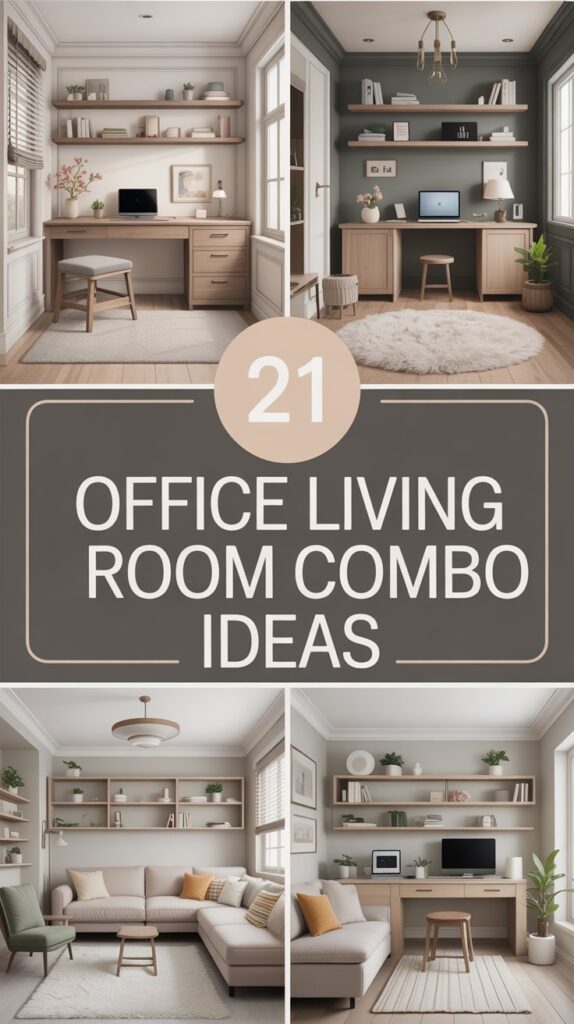
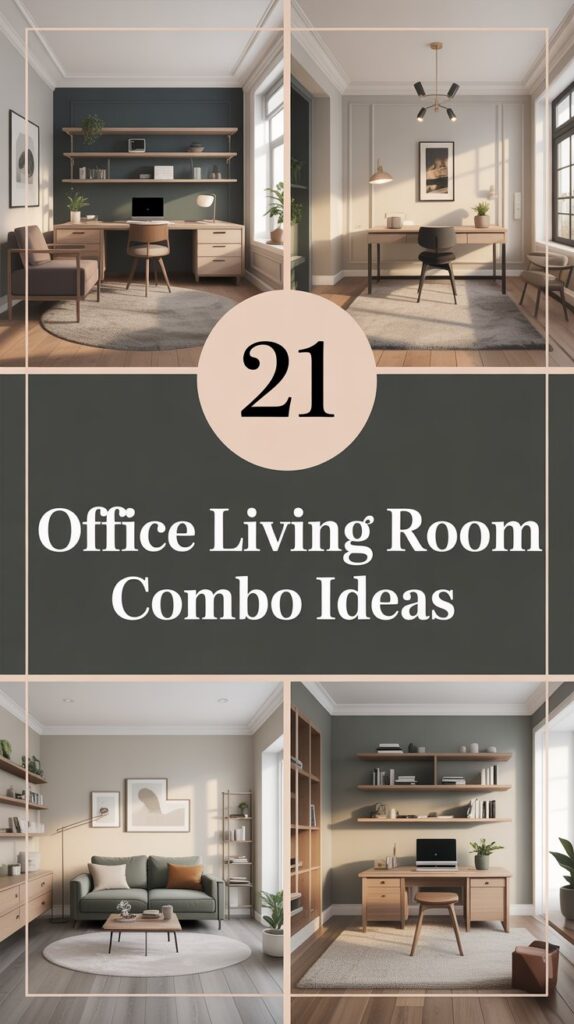
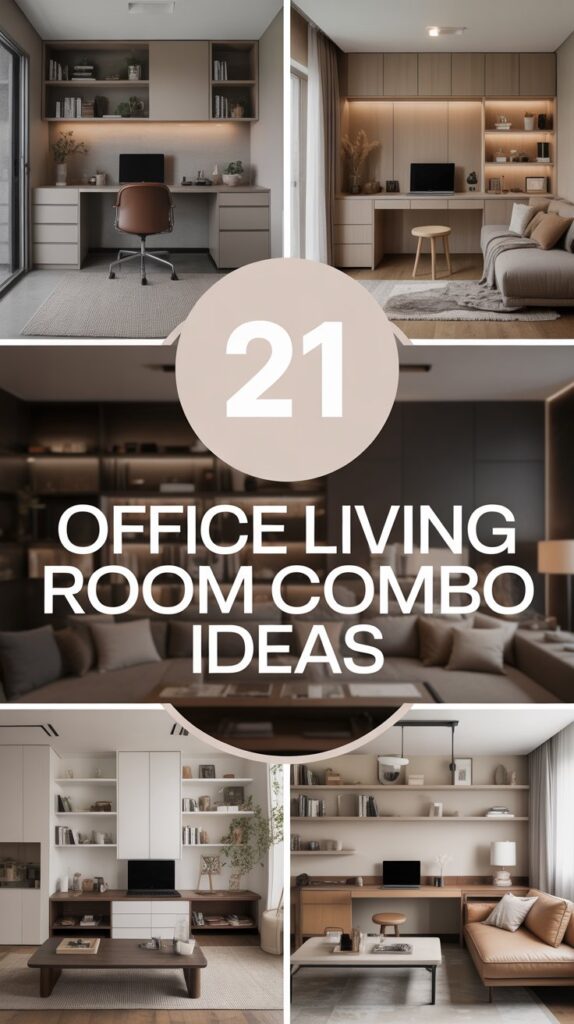
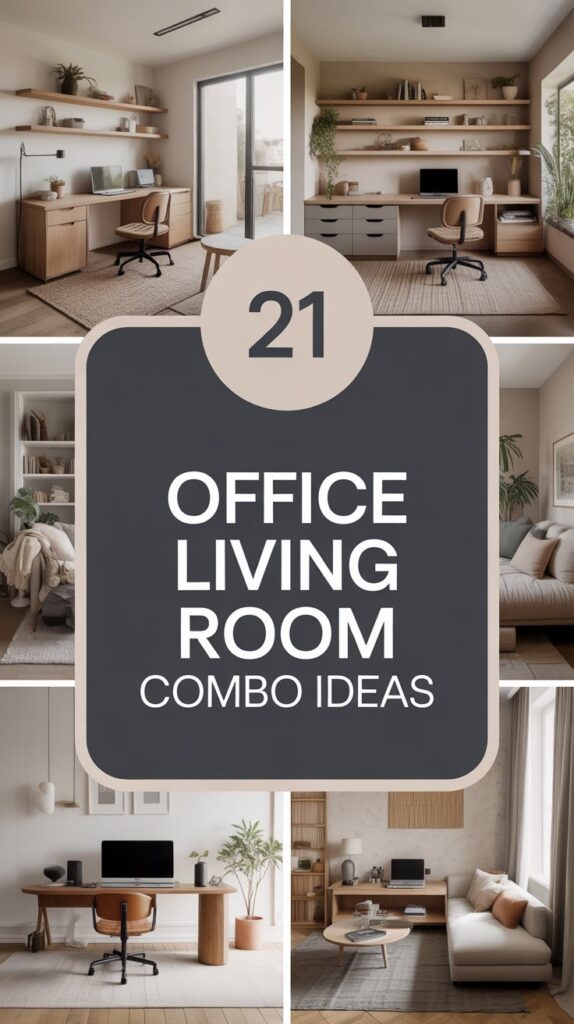
At the same time, a home office needs to inspire focus, encourage efficiency, and reflect a sense of order. Striking the right balance may seem intimidating, but it’s well within your reach.
Whether you’re working from a small city apartment or a spacious suburban house, combining your living room with an office can save you tons of space, money, and stress in the long run.
In this article, you’ll discover 21 Office Living Room Combo Ideas that address a variety of needs and styles. From minimalistic designs to cozy nooks, from bold color choices to sleek furniture arrangements—there’s something here to spark your creativity.
You’ll find tips on how to allocate space effectively, how to choose the right office furniture that complements your living area, and how to maintain the visual flow so you never feel cramped or cluttered.
By the end, you’ll be well-equipped to create a functional, beautiful, and cohesive living room-office fusion that suits your lifestyle perfectly.
Table of Contents
- 21 Office Living Room Combo Ideas
- 1. The Minimalist Work Nook
- 2. Built-In Shelving with Integrated Desk
- 3. Multi-Functional TV Stand
- 4. Sofa Table as a Workspace
- 5. Room Divider Shelf
- 6. Corner Desk Under a Gallery Wall
- 7. Floating Desk and Shelves
- 8. Office Alcove with a Sliding Door
- 9. Dual-Purpose Accent Wall
- 10. Under-the-Stairs Office Setup
- 11. Hidden Desk in a Cabinet
- 12. Shared Workspace for Two
- 13. Elevated Desk Platform
- 14. Window-Focused Workspace
- 15. Statement Office Chair
- 16. Monochromatic Palette
- 17. Boho-Chic Office Corner
- 18. Symmetrical Layout
- 19. Library-Inspired Setup
- 20. Color Zoning
- 21. Modular Furniture Setup
- Conclusion
- FAQs
- 1. How do I hide my office space in the living room?
- 2. What kind of desk should I choose for a small living room?
- 3. How can I keep the office-living room combo organized?
- 4. Is it possible to have a stylish living room and a functional office at the same time?
- 5. How do I maintain a work-life balance with an office in my living room?
21 Office Living Room Combo Ideas
Below, you’ll find 21 innovative ideas to help you create the perfect office-living room blend. Each concept tackles a unique challenge—from maximizing tiny spaces to elegantly partitioning large ones—so you can pick and choose elements that fit your own environment. —
1. The Minimalist Work Nook
If you’re drawn to uncluttered spaces and clean lines, a minimalist work nook might be your answer. Position a sleek desk against a blank wall or near a window, and pair it with a simple chair—think metal or wood with minimal padding.
Store essentials like pens, notepads, and electronics in a single drawer or a small organizer on top of the desk. Choose neutral colors like white, gray, or light wood for your furniture to keep the look consistent.
This approach ensures your workstation doesn’t overpower the living room’s ambiance. When you’re done for the day, you can easily clear away the few items you have to maintain a tidy, streamlined feel.
2. Built-In Shelving with Integrated Desk
Built-in shelves aren’t just for displaying books and decorative objects. You can cleverly integrate a small desk right in the middle of your shelving system.
This design not only saves floor space but also offers ample storage for everything from office supplies to living room accessories.
If you have a larger living room wall, you can extend the shelves upward for a dramatic floor-to-ceiling effect. Use uniform materials and finishes, such as matching wood or laminate, to ensure your desk seamlessly melds with the rest of the shelving. It’s a fantastic way to blend productivity and design.
3. Multi-Functional TV Stand
A TV stand or media console often spans a good portion of the living room wall. Why not convert one section of it into an office nook?
By inserting a drop-down desk or a pull-out shelf, you can create a hidden workspace that disappears when not in use.
Position your chair nearby so it can serve both the desk and general living room seating. Opt for designs that include compartments for a keyboard, mouse, and other office gadgets to keep your area looking polished and uncluttered.
4. Sofa Table as a Workspace
Sofa tables are long, narrow pieces of furniture placed against the back of your couch. With a bit of creative thinking, you can transform this table into a functional office desk. A taller sofa table at standing height works perfectly for short tasks or quick laptop sessions, while a standard-height table can pair with a slim chair. Decorate with a table lamp and a few organizational accessories to tie the space together. The best part? You won’t lose any living room square footage because your new “desk” occupies the normally unused area behind the couch. —
5. Room Divider Shelf
If you have a larger living room, consider incorporating a room divider shelf to section off an office area without building a permanent wall. Position open shelves or a bookcase behind a sofa or in a corner to delineate the workspace. Display decorative items on the shelves that coordinate with both the living room and office aspects—plants, books, and storage baskets can all bridge the gap. This setup maintains a sense of openness and flow while still giving your office a more defined boundary. —
6. Corner Desk Under a Gallery Wall
Corners are prime real estate if you want to maximize your living room’s utility. A corner desk can slip easily into an unused nook, creating a workspace that feels cozy yet not intrusive. Place the desk near a gallery wall that showcases your favorite artwork or motivational prints. This way, the corner feels intentionally designed rather than an afterthought. Plus, having art near your desk can spark your creativity. Opt for a compact, L-shaped desk for additional surface area without extending too far into the living room. —
7. Floating Desk and Shelves
For a light and airy look, consider mounting a floating desk on a blank wall. Floating furniture helps the room feel larger and less cluttered because you can see the floor beneath. Add matching floating shelves above or nearby for storage and display. This is especially useful in smaller apartments or studios where every inch counts. Choose a design with hidden brackets to maintain that seamless, modern vibe. You can paint or stain the wood to match the rest of your living room furniture, ensuring cohesion in the overall design. —
8. Office Alcove with a Sliding Door
If privacy is a concern but you still need to combine your office with your living area, an alcove with a sliding door or curtain can offer a simple solution. Install a pocket door or hang a stylish curtain that can be drawn when you need solitude during important phone calls or focused work sessions. When you’re done, slide the door or pull the curtain open to reintroduce the living room’s social ambiance. This approach gives you the best of both worlds: a private office and an open-concept living space. —
9. Dual-Purpose Accent Wall
Use color or texture to define your office area within the living room. Paint or wallpaper the wall behind your desk to set it apart visually. This accent wall can add a bold flair or a gentle pop of color, depending on your preference. Consider using materials like faux brick, wood panels, or geometric wallpaper. The desk will feel like its own zone, while the rest of the living space remains neutral. Tie it all together by picking up the accent color in throw pillows, rugs, or artwork throughout the living room. —
10. Under-the-Stairs Office Setup
If your living room features a staircase, you have a golden opportunity to turn that often-underused area into a fully functional workspace. Fit a custom desk into the nook beneath the stairs, or use a ready-made desk that aligns with the available space. Add shelves or cabinets to utilize the vertical area for storage. Incorporating lighting beneath the stairs will make the space more inviting, and placing a small rug can help define the office area in an otherwise open layout. You’ll save space while adding a unique design feature to your home. —
11. Hidden Desk in a Cabinet
For those who prefer a clutter-free living room, a desk hidden inside a cabinet is the ultimate stealth solution. Opt for a cabinet with doors that can close to conceal the entire workspace—including your laptop, paperwork, and office supplies—when you’re off the clock. You can add built-in lights, power strips, and organizers to make the inside of the cabinet fully functional. This option is especially helpful if you like to separate your personal life from your professional one, both visually and mentally. —
Whether you share your home with a roommate or a partner, sometimes you both need a workspace. Instead of having multiple desks in separate areas, create a single, longer desk or two side-by-side workstations in the living room. Use matching chairs and lighting to maintain a cohesive look, and consider adding a divider shelf or a small partition if you need a bit of personal space. Keep the design balanced so the workspace complements the seating arrangements or entertainment center in the rest of the living room. —
13. Elevated Desk Platform
A raised platform can turn a portion of your living room into a mini office stage. By elevating your desk area just a few inches, you define a separate zone without completely sectioning off the room. You can incorporate drawers into the platform for added storage. Be mindful of your seating arrangement so the platform doesn’t obstruct the main living area. If done well, this architectural feature can add a unique dynamic and visual interest, instantly becoming a conversation starter. —
14. Window-Focused Workspace
If you have a large window in your living room, consider placing your desk directly in front of it. Natural light can greatly improve your mood and productivity, making this placement ideal for a home office. Use curtains or blinds for glare control, especially if you spend a lot of time on the computer. Keep the rest of the living room layout flexible, ensuring there’s a comfortable seating area that doesn’t block the flow of light to your workspace. Add a few plants on the window sill to bring nature inside and boost your creativity. —
15. Statement Office Chair
Instead of blending your office chair into the living room’s decor, let it stand out as a bold statement piece. Choose a chair in a vibrant color or with a unique design, turning it into a functional accent. This idea is perfect if you’re someone who loves a bit of flair. Coordinate small accessories—like throw pillows or decorative objects in similar hues—to keep the overall theme cohesive. Your office chair can become a conversation starter instead of an eyesore in your living space. —
16. Monochromatic Palette
A monochromatic color palette can make your combined living room-office look undeniably modern and sleek. Pick a single color or hue—like various shades of gray, beige, or white—and apply it to walls, furniture, and accessories. This doesn’t mean everything has to be the exact same shade; subtle variations add depth. The key is consistency. Keep your office desk, chair, and storage in the same color family as the sofa or entertainment center. The result is a chic, harmonious space that feels larger and more unified. —
17. Boho-Chic Office Corner
If you prefer a relaxed, eclectic vibe, go for a boho-chic corner in your living room. Include rattan or wicker furniture, lush rugs, and plenty of textiles with global-inspired patterns. A wooden or bamboo desk can add warmth, while macramé wall hangings and hanging plants can elevate the ambiance. This style often involves layering different textures and materials, so don’t be afraid to experiment. The boho look allows your workspace to feel cozy and inviting, making it less of an “office” and more of a casual creative spot. —
18. Symmetrical Layout
Symmetry creates a sense of order and tranquility, which can be especially beneficial in a multi-use space. Place your desk so it’s aligned with a key focal point in the living room—like a fireplace, TV, or window—and ensure there’s balanced seating or shelving on both sides. This arrangement helps unify the room, preventing the desk from feeling like an afterthought. You can even center a rug under both the living room seating area and the office zone to tie everything together visually. —
19. Library-Inspired Setup
Turn your living room-office into a cozy reading nook that doubles as a workspace. Line the walls with bookshelves and incorporate a comfortable armchair or window seat for leisurely reading. Your desk can nestle among the shelves, offering quick access to reference materials or personal favorites. Include warm lighting, such as table lamps or sconces, to enhance the library feel. This design is perfect for literature lovers who want their living room to exude a scholarly yet inviting atmosphere. —
20. Color Zoning
If you’re hesitant to use physical barriers like shelves or doors, consider color zoning to delineate your office space from the main living area. Paint the office corner a contrasting color, or lay down a distinct rug that sets it apart from the rest of the room. This approach is subtle yet effective, and it allows you to switch visual gears when you move from one zone to another. Keep in mind that the color scheme should still complement the overall palette so your living room remains stylish and cohesive. —
21. Modular Furniture Setup
For ultimate flexibility, opt for modular furniture that can be rearranged based on your immediate needs. You might have a modular sectional sofa that can shift to create an open space for your desk, or a desk that folds up into a side table when not in use. Modular storage units let you adapt shelves and cabinets as your work habits change. This approach is ideal if you frequently host guests or if you have a dynamic schedule where you sometimes need more living space and at other times a more robust office area. —
Conclusion
Designing the perfect office-living room combo doesn’t have to be complicated or expensive. By leveraging a few smart techniques—like zoning with furniture, using color contrasts, or incorporating built-ins—you can create a space that not only meets your professional needs but also remains a warm and inviting spot for relaxation and socializing. Remember, balance is key. Your office area should be convenient to use and visually appealing, while still blending seamlessly with the broader living room aesthetic. Whether you’re going for a minimalist vibe or something more eclectic, take the time to experiment with layouts, accessories, and lighting. Ultimately, you have the freedom to design a flexible environment that supports every aspect of your life—from the deadlines you need to meet to the downtime you long for.
FAQs
1. How do I hide my office space in the living room?
You can hide your office space by integrating it into existing furniture or choosing pieces specifically designed for concealment. For instance, opt for a fold-away desk, a drop-down tabletop in a cabinet, or even a built-in desk behind doors. Another easy trick is to use decorative screens, curtains, or sliding panels to hide the office area whenever you’re not working. This helps maintain a clutter-free look in your main living area.
2. What kind of desk should I choose for a small living room?
In a small living room, go for compact or multifunctional desks. Floating desks, corner desks, or sofa tables that double as desks are excellent options. Also consider fold-up or collapsible desks that you can store away when not in use. Another strategic move is to choose desks with built-in storage to keep essentials out of sight and maintain a tidy living area.
3. How can I keep the office-living room combo organized?
Organization is crucial in dual-purpose spaces. Invest in smart storage solutions like floating shelves, built-in cabinets, and storage ottomans. Keep everyday essentials in labeled boxes or baskets to avoid visual clutter. Also, establish a routine of tidying up daily—like filing documents and stowing away office supplies—so the living room feels welcoming when you’re off the clock.
4. Is it possible to have a stylish living room and a functional office at the same time?
Absolutely. The key is to choose furniture, color palettes, and accessories that complement each other. For a cohesive look, repeat design elements across both areas. For example, if you have a modern velvet sofa, opt for a sleek modern desk in a matching hue or complementary material. Add lighting that suits both work tasks and ambient needs, such as an adjustable lamp that can serve as mood lighting during downtime.
5. How do I maintain a work-life balance with an office in my living room?
Boundaries are essential. If possible, define a specific corner or area for work. Keep that space tidy and remove work-related items when you’re done for the day. Consider visual cues like a room divider, an accent wall, or a separate rug to mentally and visually separate your professional life from your leisure time. Turning off your computer, closing the cabinet doors, or sliding away the desk are small actions that can make a big impact on maintaining a healthy work-life balance.

